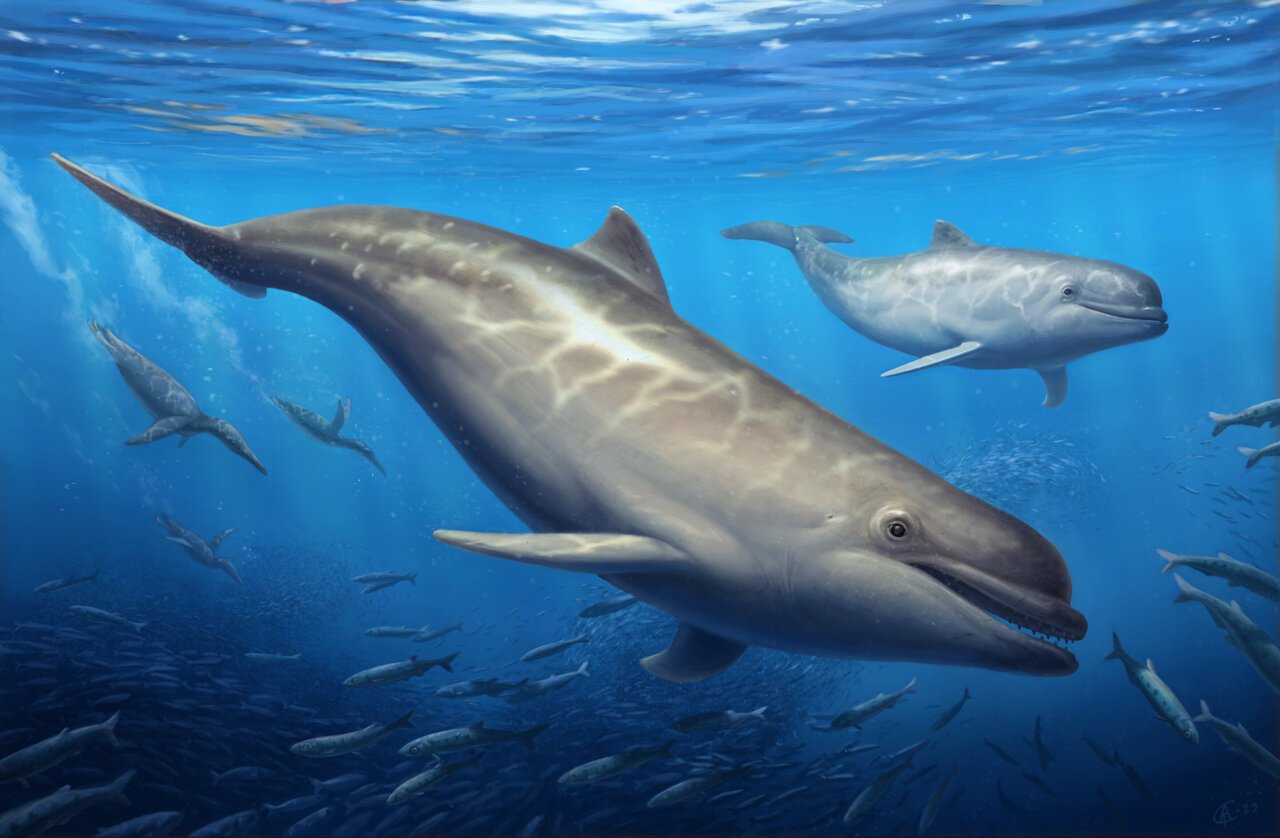Introducing Olympicetus thalassodon, a fascinating new species of early toothed whale that inhabited the North Pacific coastline approximately 28 million years ago. In a recent study published by paleontologist Jorge Velez-Juarbe from the Natural History Museum of Los Angeles County, this species sheds light on the ancestral origins and evolutionary diversification of modern dolphins, porpoises, and other toothed whales.
Olympicetus thalassodon, along with two closely related odontocetes, was discovered within the Pysht Formation along the coast of Washington State’s Olympic Peninsula. These fossils, estimated to be between 26.5 and 30.5 million years old, provide valuable insights into the early history of these marine mammals.
What sets Olympicetus and its relatives apart is their unique combination of characteristics, distinguishing them from other toothed whale groups. These features include multi-cusped teeth, symmetric skulls, and nostrils positioned forward, resembling an intermediate form between archaic whales and the familiar dolphins we recognize today. Dr. Velez-Juarbe, the Associate Curator of Marine Mammals at NHMLAC, emphasizes the significance of these traits in understanding the evolutionary relationships of these ancient species.
The study further reveals that Olympicetus and its kin belong to a family called Simocetidae, which is known exclusively from the North Pacific and represents one of the earliest diverging groups of toothed whales. The Pysht Formation, where these fossils were found, has yielded a diverse assemblage of marine creatures, including extinct flightless birds called plotopterids, peculiar relatives of seals and walruses known as desmostylians, and toothed baleen whales.
Differences in body size, tooth structure, and feeding-related adaptations suggest that simocetids employed various prey acquisition strategies and likely had distinct dietary preferences. Olympicetus stands out due to its peculiar teeth, which exhibit heterodonty—meaning they differ along the tooth row—unlike the teeth of more advanced odontocetes, which tend to be simpler and more uniform.
Despite these discoveries, many aspects of the early toothed whales’ biology remain unknown. One intriguing question is whether they possessed echolocation abilities like their modern counterparts. Certain features of their skulls, such as the presence of a melon, are associated with echolocating capabilities. A previous study indicated that neonatal individuals may have been unable to hear ultrasonic sounds, suggesting the need to investigate the earbones of subadult and adult individuals to ascertain whether this ability developed with age.
The unveiling of Olympicetus thalassodon and its relatives contributes significantly to our understanding of the ancient origins and adaptations of toothed whales. These remarkable creatures provide a window into the evolutionary history of the marine ecosystems that thrived millions of years ago along the North Pacific coastline.
Source: PeerJ
